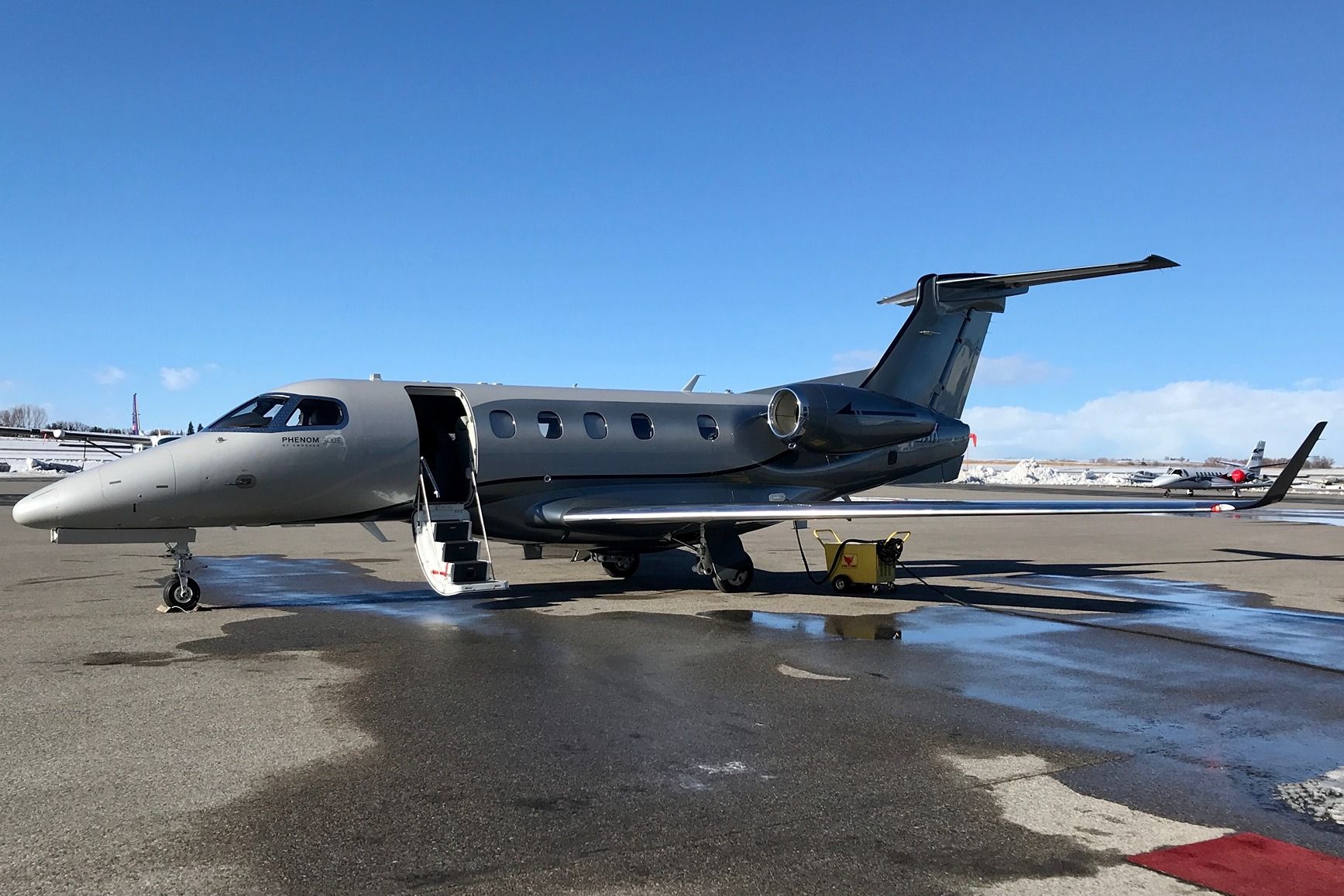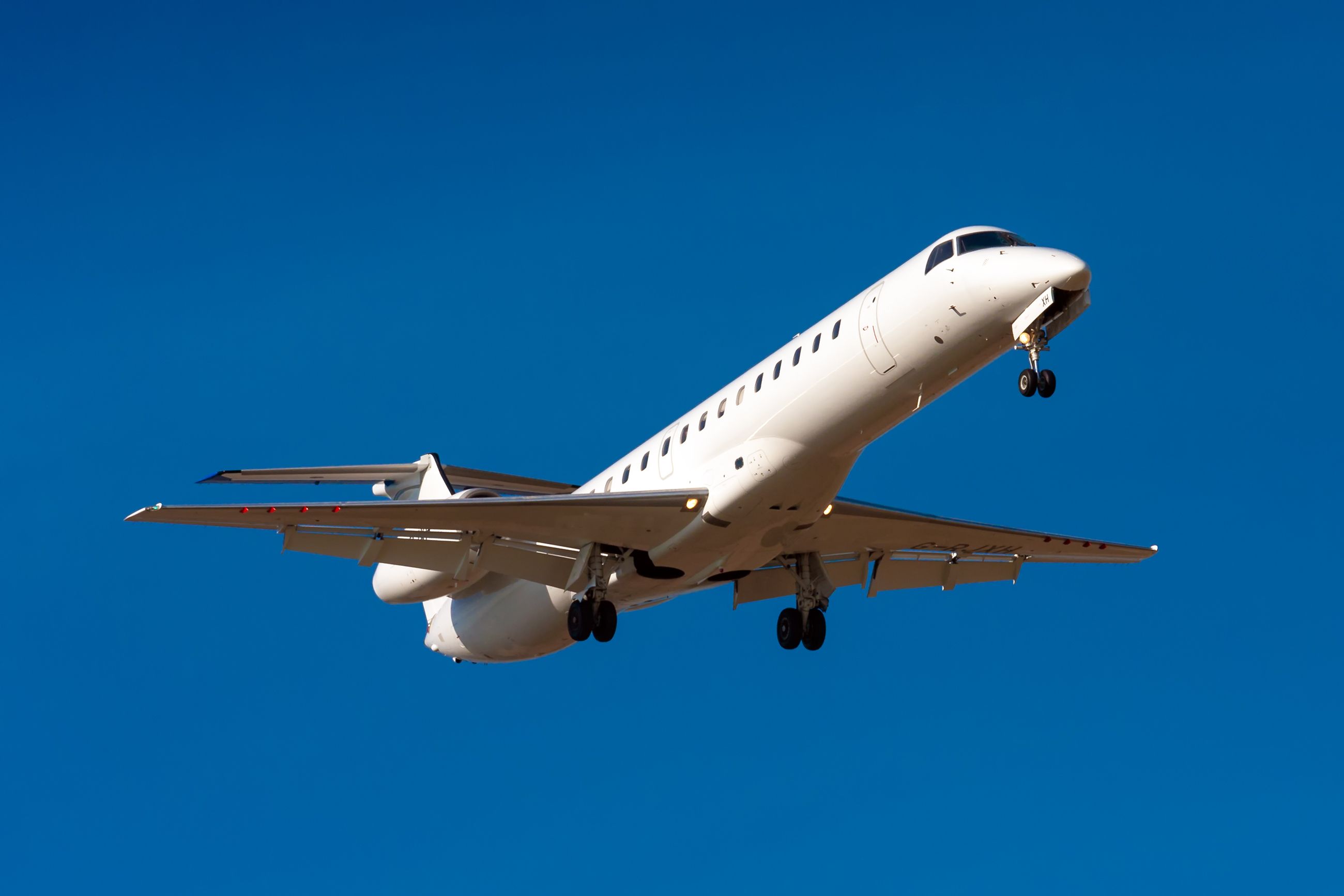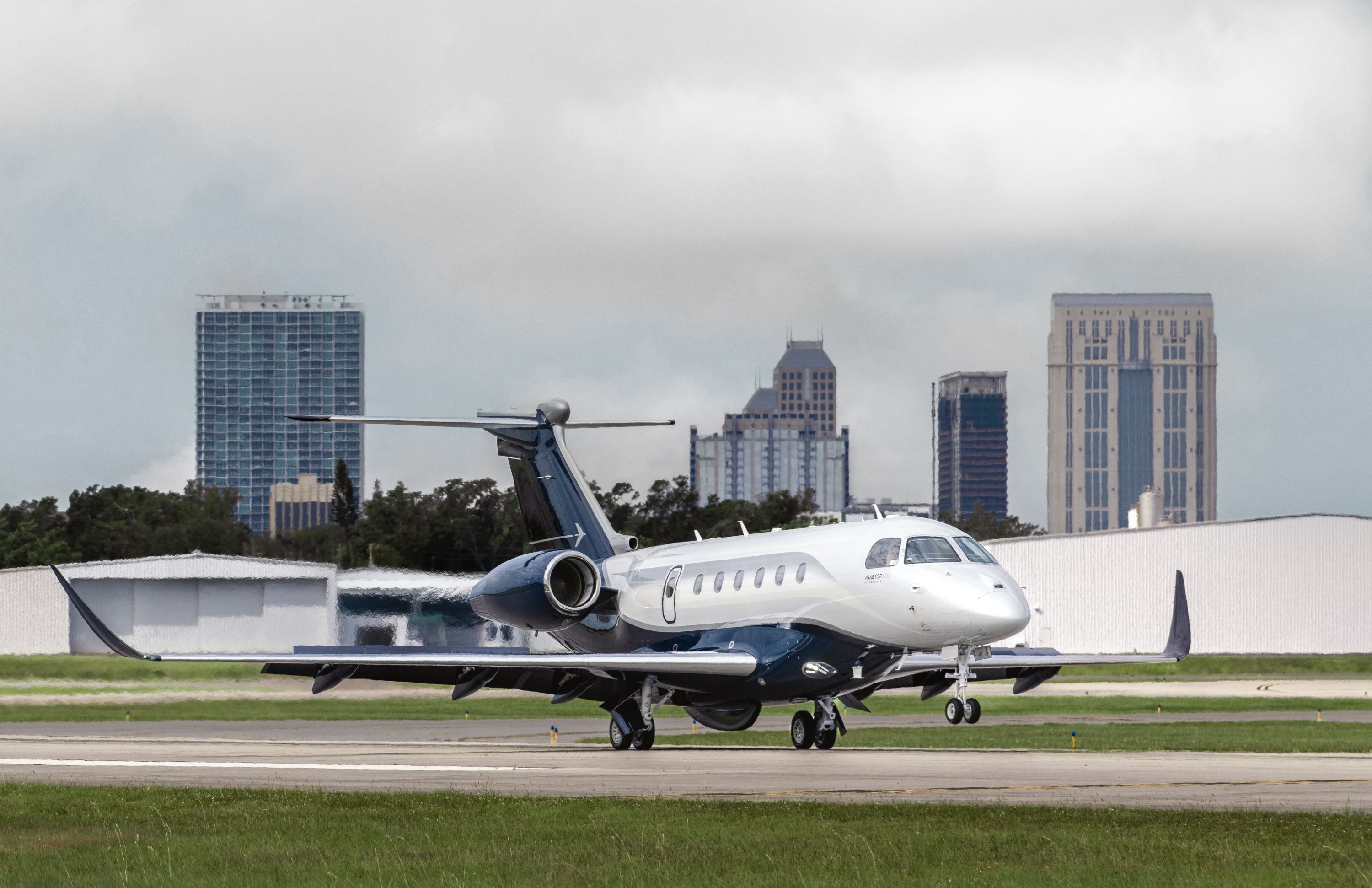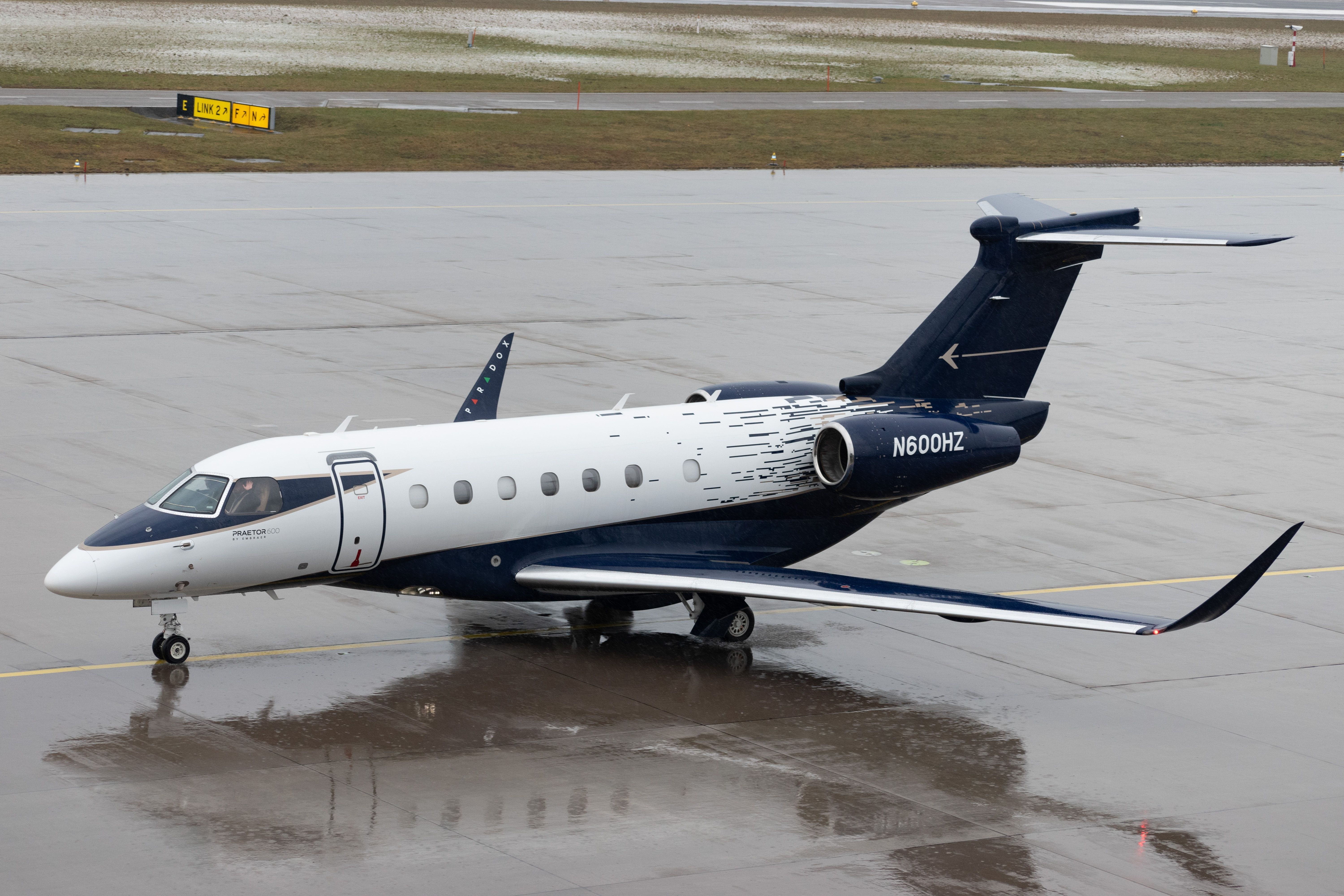Summary
- Embraer is a global leader in producing civil aircraft, with a focus on both regional airliners and private business jets.
- The Phenom 300 and Phenom 100 have been wildly successful as private jets, with the Phenom 300 leading sales for 12 years.
- The Praetor family, particularly the Praetor 600, is an upgrade to the Legacy family, offering increased range and efficiency.
Embraer is well known by many travelers across the world. It is currently the third-largest producer of civil aircraft in the world, and it only trails Boeing and Airbus in that category.
Many flying enthusiasts have experienced riding onboard an Embraer Regional Jet (ERJ) at some point in time, as over 1,200 of these regional airliners have been produced since 1997. Other travelers have also flown on the Embraer E-Jet class of airliners, which replaced the ERJ family.
These aircraft, some of which have been replaced by upgraded versions, are still in production and used by major airlines like SkyWest Airlines, Republic Airways, Envoy Air, and Mesa Airlines. They have been a staple for many regional or short-haul connections.
Photo: Rudzenka | Shutterstock
However, Embraer has also built a large private aviation portfolio. It originally developed the Embraer Lineage 1000 from the E-Jet class of aircraft. However, this aircraft ceased production in 2020, with only 28 aircraft built. Embraer wanted to focus instead on its more successful business jet lines.
The company’s most successful business jet is the Embraer Phenom 300. This aircraft is the most used private jet in the United States and has also been the most purchased private jet of the past 15 years. Embraer also manufactures a smaller Phenom business jet, the Embraer Phenom 100.

Related
Embraer’s Phenom 300 Is The World’s Best-Selling Light Jet For 12 Years
Over 60 Phenom 300s were delivered in 2023.
Besides these two successful business jets, Embraer also manufactures two more. These aircraft, which fit into the midsize and super-midsize business jet categories, are known as the Praetor 500 and the Praetor 600. They were both upgrades to previous variants, which were designated as the Legacy 450 and the Legacy 500.
The larger of the two, which is a super-midsize jet, is the Praetor 600. Let’s take a closer look at this unique aircraft and also take a look at what makes this aircraft so special.
Upgrades to the Legacy 500
As previously mentioned, the Praetor family is a set of upgrades to the Legacy family, which was previously manufactured by Embraer. Specifically, the Praetor 600 replaced the Legacy 500. The original Legacy 500 entered service in October 2014, and nearly 100 were produced.
Embraer unveiled the original concept for a super-midsize business jet in August 2007. The company wanted to bridge the gap between its existing Phenom 300 and the larger Legacy 600. Eventually, the Legacy 600 would enter service with a flat-floor stand-up cabin and fly-by-wire flight controls. These were both industry firsts for the class of business jet aircraft.
Photo: Embraer
The Praetor family of aircraft was first introduced at the annual National Business Aviation Association (NBAA) convention in October 2018. The main focus of these upgrades was to introduce an aircraft with a further range and improved efficiency. To accomplish this, Embraer added upgraded engines, larger winglets, and additional fuel tanks in the aircraft’s belly.
Embraer began flight testing the Praetor 600 in March 2018. By the time it was officially unveiled at the 2018 NBAA convention, the flight test program had already accumulated over 300 hours of flight test. After a lengthy development process, the National Civil Aviation Agency of Brazil granted the aircraft its type certification in April 2019.
Later that year, in May, both the Federal Aviation Administration (FAA) and the European Aviation Safety Agency (EASA) also awarded the aircraft its certification. Embraer began delivering the aircraft the same year. Its first delivery was to Flexjet, which intends to become the largest operator of Praetor aircraft.
Interesting design features
The Praetor family of aircraft has a very similar structure, although they have varying sizes and specifications. The Praetor 600 looks like a standard business jet, with a low wing, rear-mounted engines, and retractable tricycle landing gear. It also utilizes fly-by-wire flight controls, which was the first aircraft to use these in the super-midsize class.
The Praetor 600 utilizes upgraded Honeywell HTF7500E turbofan engines. The upgraded engines each provide the aircraft with over 7,500 pounds of force of thrust. The more efficient engines help the aircraft reach a further range than the Legacy 500.
Photo: Robert Buchel | Shutterstock
The aircraft also utilizes the Rockwell Collins Pro Line Fusion flight deck. This glass cockpit utilizes four large displays for the pilot’s use. This avionics suite also comes equipped with an autopilot system, an autothrottle system, a flight management system, and an optional enhanced vision system (EVS) using a heads-up display (HUD) and an infrared camera on the nose of the plane.
Inside the cabin, the Praetor 600 can fit up to 12 passengers, although the standard configuration fits up to eight passengers with two pilots. The interior of the aircraft has the following measurements:
- Cabin length: 26 feet ten inches
- Cabin height: six feet
- Cabin width: six feet ten inches
Other performance specifications
The main focus of the Praetor upgrades to the Legacy aircraft was increasing the range. With two additional belly tanks, the Praetor 600 can reach a maximum range of 4,018 nautical miles (4,624 miles), considered the top of the super-midsize cabin class.
Besides the impressive range, the Praetor 600 has the following other specifications:
|
Length |
68 feet one inch |
|---|---|
|
Height |
21 feet two inches |
|
Wingspan |
70 feet six inches |
|
Maximum takeoff weight (MTOW) |
42,858 pounds |
|
Maximum speed |
Mach 0.83 (636 miles per hour) |
|
Cruise speed |
466 knots (536 miles per hour) |
|
Flight ceiling |
45,000 feet |




